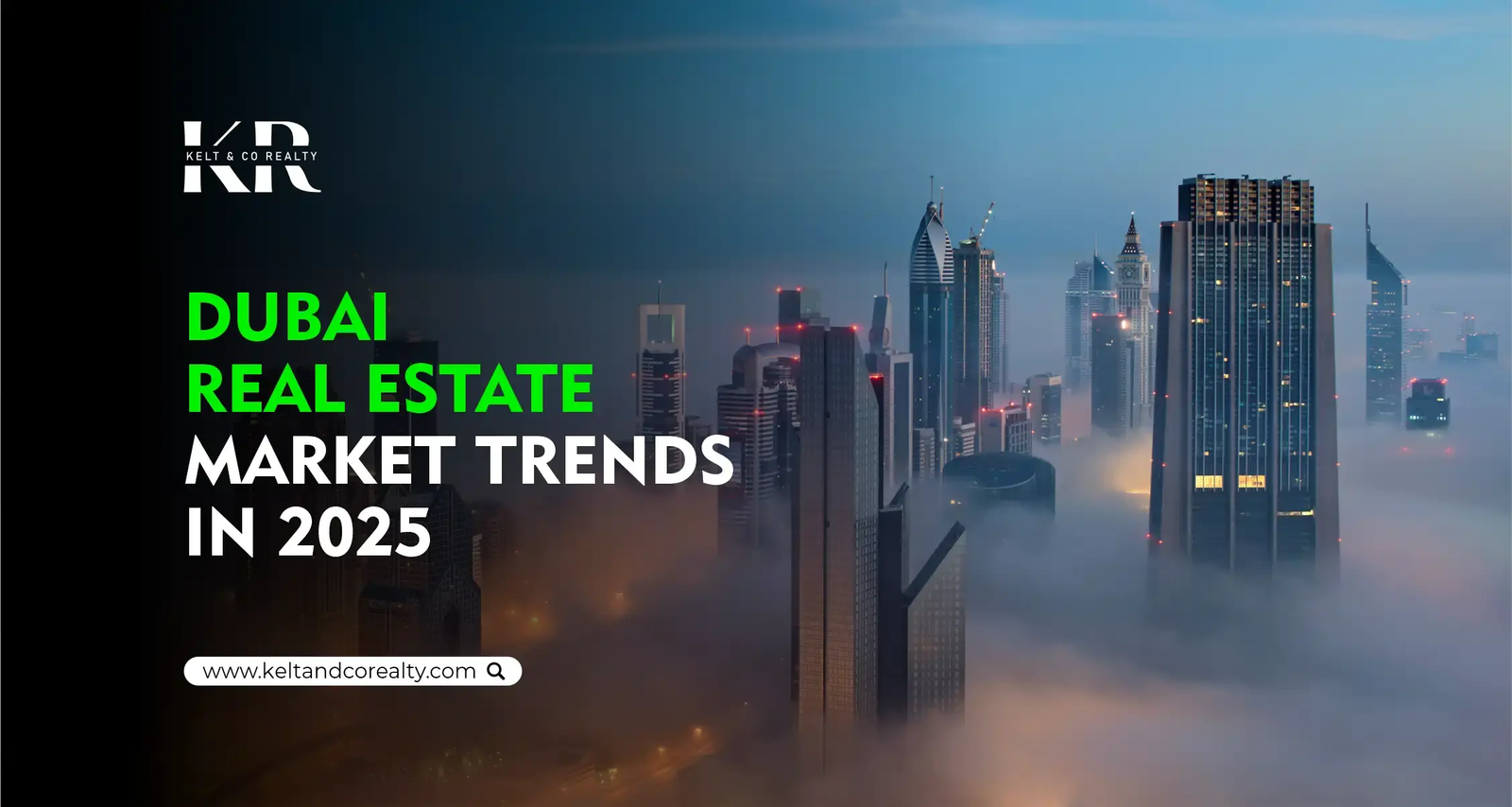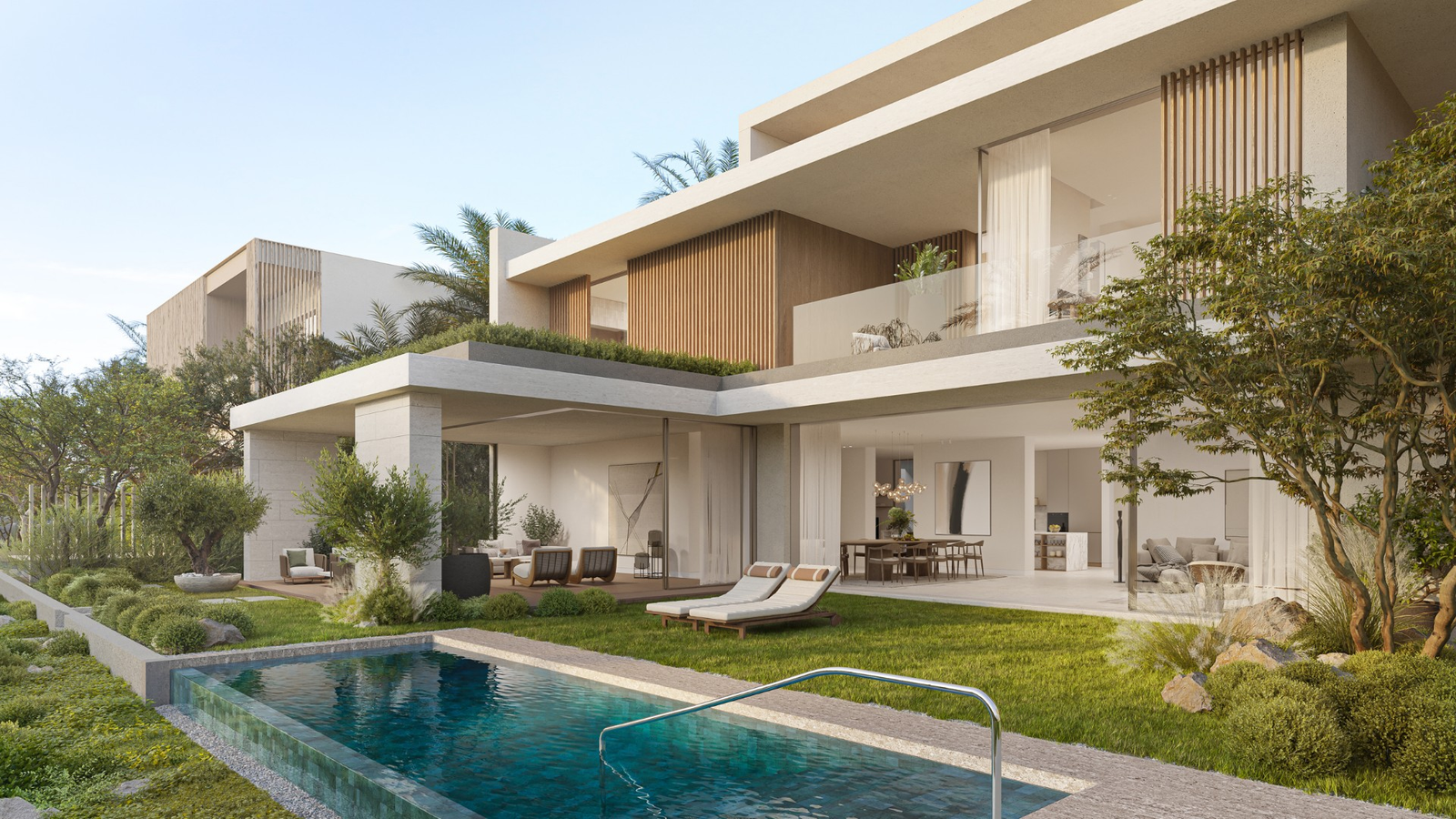Now Reading: Dubai Property Trends 2025: What’s Driving Price Growth?
-
01
Dubai Property Trends 2025: What’s Driving Price Growth?
Dubai Property Trends 2025: What’s Driving Price Growth?

Table of Contents
Property Trends: Imagine buying a sleek apartment or sprawling villa in Dubai, watching its value climb as the city pulses with energy, and pocketing tax-free profits in one of the world’s most dynamic markets. Dubai’s real estate scene is a magnet for investors, offering no personal income tax, capital gains tax, or annual property taxes unlike cities like London or New York, where taxes can eat up 15-40% of returns. The UAE’s dirham, pegged to the U.S. dollar, eliminates currency risk, and residential sales are VAT-exempt, saving thousands.
With a 5% population surge, 25 million tourists, and 5-8% price appreciation expected in 2025, Dubai’s 6-10% rental yields outshine global hubs like London (2-4%) or New York (3-4%). Free zones offer zero corporate tax for up to 50 years, amplifying wealth. Properties over $545,000 qualify for a 10-year Golden Visa, adding residency perks.
This article explores the key trends driving Dubai’s property price growth in 2025, focusing on five high-demand areas Dubai Hills Estate, Dubai Marina, Jumeirah Village Circle, Business Bay, and Dubai South and how they fuel investment opportunities.
Dubai’s Tax-Free Advantage Fuels Demand
Dubai’s tax-free structure is a cornerstone of its real estate appeal. With no personal income tax, a $300,000 property yielding 7% ($21,000 annually) stays fully yours, compared to $14,700-$16,800 after taxes elsewhere. Zero capital gains tax ensures a $150,000 profit on a sale is untouched, unlike $30,000-$42,000 lost in the U.S. or UK. Annual property taxes, common at 1-2% ($3,000-$6,000) in other markets, don’t exist in Dubai.
Residential sales are VAT-exempt, saving 5% ($15,000-$50,000), though off-plan purchases may incur recoverable VAT. The 9% corporate tax, introduced in 2023, doesn’t apply to individuals, and free zone companies with qualifying income face zero corporate tax, saving $1,000-$20,000 yearly. Small business relief waives corporate tax for revenues under $816,000 until December 31, 2026. With 58% of buyers being foreign nationals, this tax-friendly environment drives demand, pushing prices upward in 2025.
Population and Tourism Surge
Dubai’s 5% population growth, fueled by expatriates and professionals, is a major driver of price growth. The city’s 25 million tourists annually boost short-term rental demand, particularly in areas like Dubai Marina, increasing rental yields by 10-20% via platforms like Airbnb.
A $400,000 apartment yielding $28,000 annually can jump to $33,600-$36,400 with short-term rentals, attracting investors and driving property prices up by 5-8%. The 2040 Urban Master Plan, emphasizing sustainable growth, supports infrastructure like metro expansions, further elevating property values in connected areas like Jumeirah Village Circle and Dubai South.
Dubai Hills Estate: Luxury and Appreciation Leader
Dubai Hills Estate, a freehold free zone, is a hotspot for price growth, driven by luxury demand and Trends infrastructure. Offering 2-6 bedroom villas and apartments priced from $408,375 to $2.18 million, it delivers 5-8% yields. Projects like Emaar Collective 2.0 boast golf-course views, Dubai Hills Mall access, and top schools, attracting affluent families. A $600,000 villa yields $36,000-$48,000 tax-free annually, versus $25,200-$33,600 elsewhere. With 28.7% villa price growth, selling it for $900,000 yields a $300,000 tax-free profit, saving $60,000-$84,000.
Initial costs include a 4% DLD fee ($16,335-$87,200), 2% broker fee ($8,168-$43,600), and a 10% deposit ($40,838-$217,800) with a 70/30 payment plan. Off-plan purchases may incur a 5% VAT ($20,419-$108,900), recoverable via Federal Tax Authority (FTA) registration for $500-$1,000. Annual maintenance fees are $5,000-$10,000, and landlords pay a 5% municipality fee ($1,800-$2,400).
A free zone company eliminates corporate tax on up to $174,400 in rental income, saving $17,440 annually. U.S. investors can deduct depreciation ($14,836-$79,273) and management fees ($3,000-$8,000), saving up to $29,451. With Golden Visa eligibility and high expatriate demand, Dubai Hills Estate leads price growth.
Dubai Marina: Tourist-Driven Price Surge
Dubai Marina, a freehold free zone, sees robust price growth fueled by tourism and lifestyle appeal. Offering 1-3 bedroom apartments priced from $326,700 to $816,750, it delivers 6-8% yields. Projects like Marina Gate feature yacht views, retail hubs, and DMCC Metro access, drawing professionals and tourists. A $400,000 apartment yields $28,000 tax-free annually, versus $19,600-$22,400 elsewhere. With 6.2% price growth, selling it for $600,000 yields a $200,000 tax-free profit, saving $40,000-$56,000.
Initial costs include a 4% DLD fee ($13,068-$32,670), 2% broker fee ($6,534-$16,335), and a 10% deposit ($32,670-$81,675) with a 60/40 payment plan. Off-plan VAT of 5% ($16,335-$40,838) is recoverable via FTA. Annual maintenance fees are $2,000-$5,000, and landlords pay a 5% municipality fee ($1,400). A free zone company eliminates corporate tax on up to $65,340 in rental income, saving $6,534 annually. U.S. investors can deduct depreciation ($11,873-$29,673) and management fees ($1,827-$5,227), saving up to $11,006. With short-term rental demand soaring, Dubai Marina’s prices are climbing.
Jumeirah Village Circle: Affordable Growth Hub
Jumeirah Village Circle (JVC), a freehold free zone, drives price growth with affordability and high yields. Offering studios to 3-bedroom villas priced from $136,125 to $680,625, JVC delivers 7-10% yields. Projects like Nakheel’s Villa Amalfi feature parks and proximity to Circle Mall, attracting young professionals. A $150,000 studio yields $12,000-$15,000 tax-free annually, versus $8,400-$10,500 elsewhere. With 7% price growth, selling it for $225,000 yields a $75,000 tax-free profit, saving $15,000-$21,000.
Initial costs include a 4% DLD fee ($5,445-$27,225), 2% broker fee ($2,723-$13,613), and a 10% deposit ($13,613-$68,063) with a 60/40 payment plan. Off-plan VAT of 5% ($7,500-$34,031) is recoverable via FTA. Annual maintenance fees are $1,500-$5,000, and landlords pay a 5% municipality fee ($600-$750). A free zone company eliminates corporate tax on up to $54,500 in rental income, saving $5,450 annually. U.S. investors can deduct depreciation ($4,950-$24,750) and management fees ($762-$4,364), saving up to $8,444. With Al Khail Metro access, JVC’s affordability fuels price growth.
Business Bay: Corporate Demand Booster
Business Bay, a freehold free zone, sees price growth driven by corporate tenant demand. Offering studios to 3-bedroom apartments priced from $272,250 to $1.09 million, it delivers 6-8% yields. Projects like Peninsula Four feature canal views and DIFC proximity, appealing to professionals. A $300,000 apartment yields $21,000 tax-free annually, versus $14,700-$16,800 elsewhere. With 17% office rent increases, selling it for $450,000 yields a $150,000 tax-free profit, saving $30,000-$42,000.
Initial costs include a 4% DLD fee ($10,890-$43,560), 2% broker fee ($5,445-$21,780), and a 10% deposit ($27,225-$109,000) with a 70/30 payment plan. Off-plan VAT of 5% ($13,613-$54,500) is recoverable via FTA. Annual maintenance fees are $2,000-$6,000, and landlords pay a 5% municipality fee ($1,050). A free zone company eliminates corporate tax on up to $87,200 in rental income, saving $8,720 annually. U.S. investors can deduct depreciation ($9,891-$39,636) and management fees ($1,523-$6,976), saving up to $14,678. Business Bay’s corporate appeal drives price growth.
Dubai South: Infrastructure-Driven Growth
Dubai South, a freehold free zone near Al Maktoum International Airport, is an emerging star for price growth, fueled by infrastructure. Offering 3-5 bedroom villas priced from $381,150 to $816,750, it delivers 6-7% yields. Projects like Emaar South’s Urbana feature green spaces and proximity to Expo City, attracting professionals. A $450,000 villa yields $27,000-$31,500 tax-free annually, versus $18,900-$22,050 elsewhere. With 5-7% price growth, selling it for $675,000 yields a $225,000 tax-free profit, saving $45,000-$63,000.
Initial costs include a 4% DLD fee ($15,246-$32,670), 2% broker fee ($7,623-$16,335), and a 10% deposit ($38,115-$81,675) with a 70/30 payment plan. Off-plan VAT of 5% ($19,058-$40,838) is recoverable via FTA. Annual maintenance fees are $2,500-$4,500, and landlords pay a 5% municipality fee ($1,350-$1,575). A free zone company eliminates corporate tax on up to $87,200 in rental income, saving $7,848 annually. U.S. investors can deduct depreciation ($13,366-$24,750) and management fees ($2,057-$4,364), saving up to $8,444. Airport expansion drives Dubai South’s price growth.
Strategies to Capitalize on Price Growth
To maximize returns, use these strategies. First, target high-growth areas like Dubai Hills Estate (28.7% appreciation) or JVC (7% yields). Second, set up a free zone company as a QFZP, saving $1,000-$20,000 annually on corporate tax. Third, recover 5% VAT ($5,000-$50,000) on off-plan purchases via FTA registration, costing $500-$1,000.
Fourth, leverage small business relief for revenues under $816,000 until December 31, 2026, saving $1,000-$5,000. Fifth, U.S. investors should report rental income on Schedule E, deducting depreciation, maintenance ($1,500-$10,000), and mortgage interest, saving thousands, while non-U.S. investors use double taxation treaties with 130+ countries. Consult a tax professional to ensure compliance.
Navigating Risks for Success
Risks like off-plan delays, oversupply (41,000 new units), and global economic shifts exist. Mitigate by choosing trusted developers like Emaar or Nakheel, verifying escrow compliance under the 2025 Oqood system, and targeting high-demand areas like Dubai Marina or Business Bay. Ensure QFZP eligibility and proof of funds compliance to avoid fines up to $136,125. Short-term rentals in Dubai Marina can boost yields by 10-20%.
Riding the 2025 Price Wave
Dubai’s 2025 price growth is driven by tax-free incentives, population surges, tourism, and infrastructure like metro expansions and Al Maktoum Airport. Dubai Hills Estate leads with luxury demand, Dubai Marina thrives on tourism, JVC offers affordable growth, Business Bay rides corporate demand, and Dubai South leverages infrastructure. With 58% foreign buyers and Golden Visa perks, these trends make Dubai a top investment destination for 2025.
read more: Best Off-Plan Property Projects in Dubai Emirates This Year






















